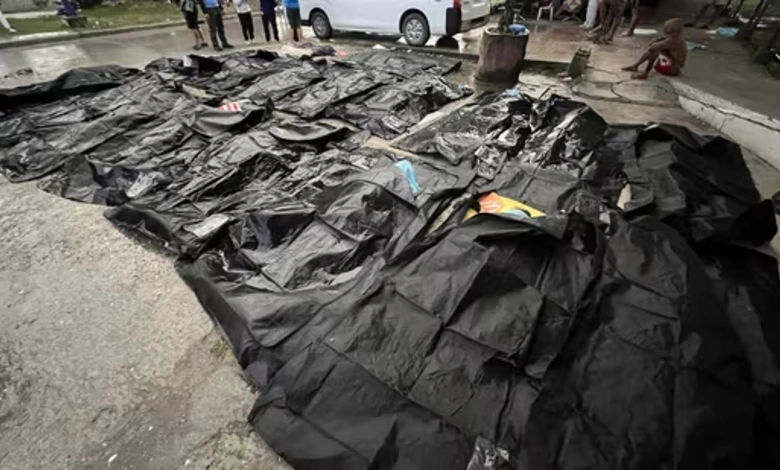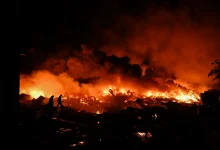Devastating Quake Claims 31 Lives in Central Philippines, Stranding Rescue Teams Amid Debris

MANILA – A powerful 6.9-magnitude earthquake struck central Philippines on Tuesday, leaving at least 31 people dead and numerous others wounded, with authorities bracing for a higher casualty count as search and recovery efforts continue under challenging conditions. The seismic event triggered widespread disruptions, including outages in electricity and water services, compounding the chaos in the affected regions.
Officials in Cebu province indicated that a clearer picture of the destruction would emerge as daylight revealed the full scope of the damage. Images from the scene captured the grim aftermath, with shrouded bodies placed outside Cebu Provincial Hospital in Bogo City following the intense shaking on Wednesday, October 1, 2025.
The quake’s epicenter lay approximately 19 kilometers northeast of Bogo, a coastal community of around 90,000 residents in Cebu province, where at least 14 fatalities were reported. Local leaders, including Cebu Governor Pamela Baricuatro, warned of potentially graver losses, stating, “It could be worse than we think,” and emphasized that assessments would intensify once morning light allowed better access.
In response to the tremors, the Philippine Institute of Volcanology and Seismology promptly issued a tsunami alert, urging residents to evacuate shorelines in Cebu as well as neighboring Leyte and Biliran provinces. The advisory was subsequently canceled after no significant waves materialized.
Infrastructure bore the brunt of the force, with fissures splitting asphalt and concrete surfaces while multiple structures sustained severe harm. Emergency responders encountered significant obstacles in reaching a remote mountain hamlet in Bogo, where landslides and massive boulders obstructed paths. “It’s hard to move in the area because there are hazards,” noted Glenn Ursal, a disaster-mitigation officer, as reported by The AP.
Tragedies unfolded in nearby locales: In San Remigio town, close to Bogo, a basketball match ended in horror when five individuals, one a child, perished as they sought shelter from toppling walls. Further south in Medellin town, 12 victims lost their lives beneath collapsing roofs and partitions in their homes.
Historic landmarks also fell victim, as the ancient Parish of Saint Peter the Apostle in Bantayan partially collapsed under the onslaught. Social media footage depicted ornate fixtures plummeting from the ceiling during the violent jolts, followed by the structure’s facade giving way amid cries of alarm from onlookers.
This calamity arrives mere days after a fierce storm battered Cebu on Friday, which killed 27 and forced the relocation of tens of thousands while severing power lines. Situated along the Pacific “Ring of Fire”—a volatile belt of fault lines encircling the ocean—the Philippines endures frequent assaults from quakes, eruptions, and seasonal tempests, cementing its status as one of the globe’s most vulnerable nations to natural disasters.




